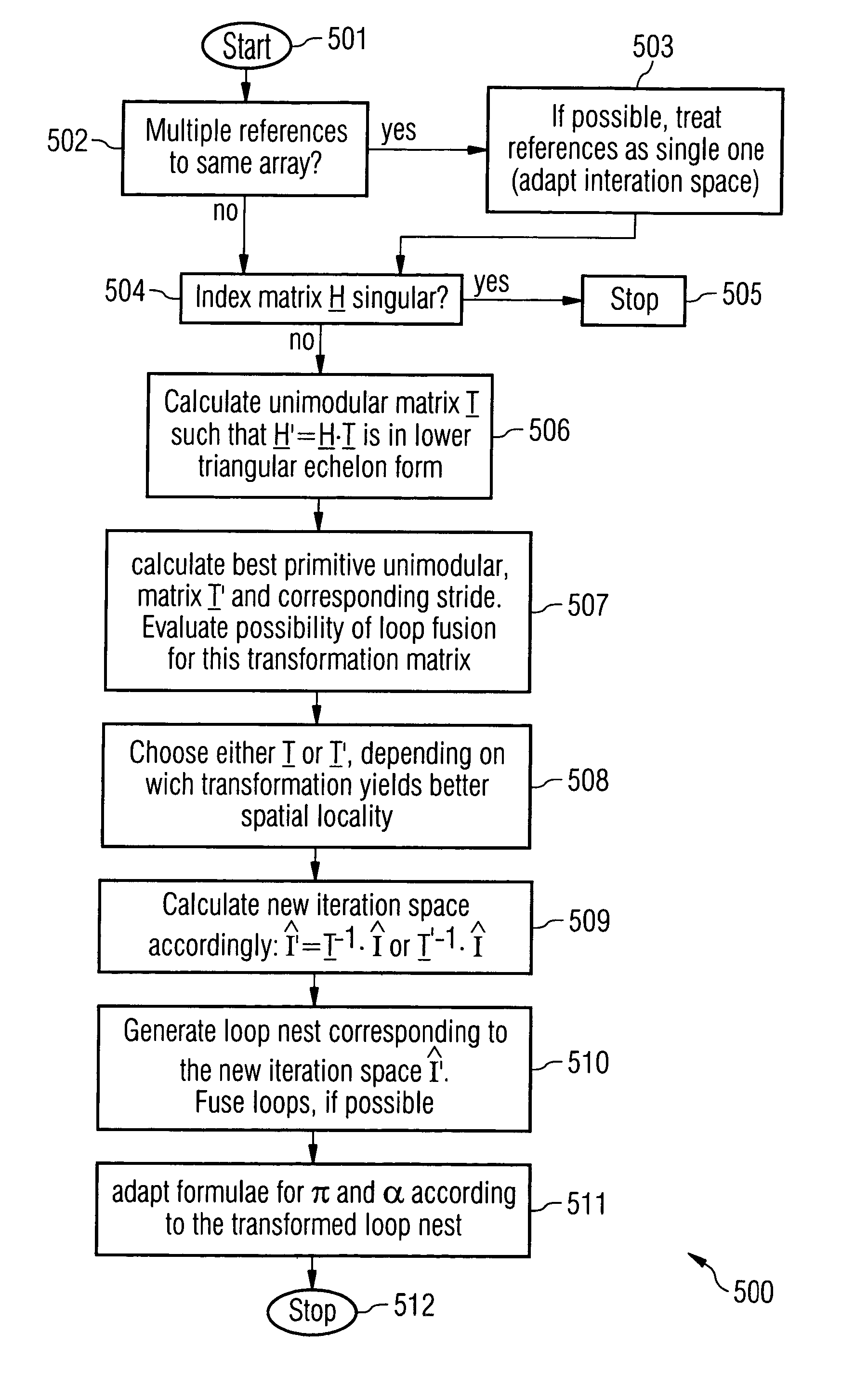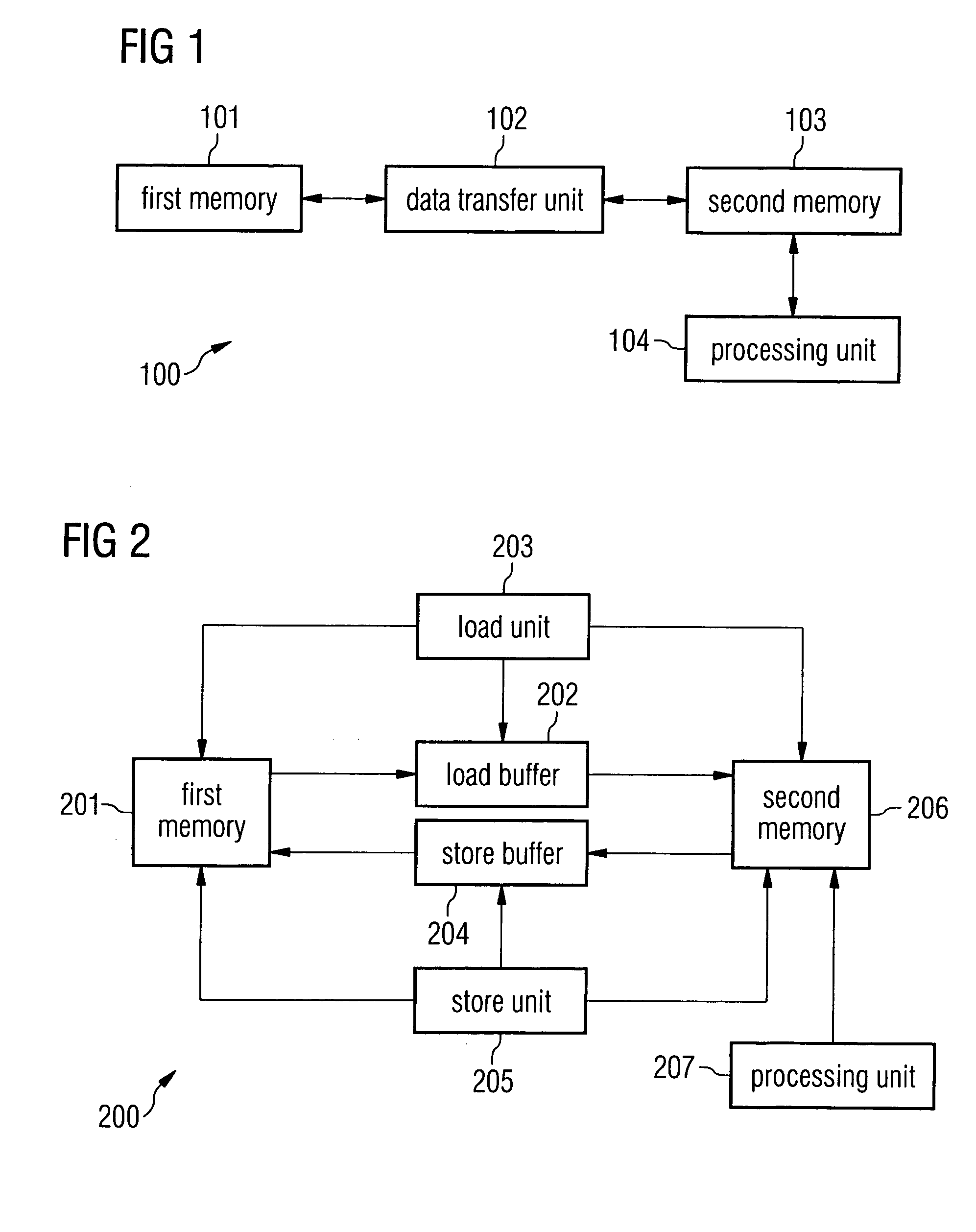Computer system for data processing and method for the transfer of an array segment of an affine-indexed multi-dimensional array referenced in a loop nest from a first memory to a second memory
a computer system and loop nest technology, applied in computing, electric digital data processing, instruments, etc., can solve the problems of low application performance, i/o bottleneck, and achieve optimal processing speed, no run time overhead of data copying, and high degree of freedom
- Summary
- Abstract
- Description
- Claims
- Application Information
AI Technical Summary
Benefits of technology
Problems solved by technology
Method used
Image
Examples
Embodiment Construction
[0076]FIG. 1 gives a schematic view of the computer system 100 according to one embodiment of the invention.
[0077] A first memory 101 is connected via a data transfer unit 102 to a second memory 103. A processing unit 104 operates on the second memory 103.
[0078] In this embodiment, the first memory 101 contains data which have to be processed by the processing element 104. Since the processing unit can only process data which are stored in the second memory 103, the data to be processed have to be transferred to the second memory 103. According to the invention, the data transfer is controlled by the data transfer unit 102, which can be programmed independently from the processing unit 104.
[0079] An engineering application computer program, by way of example, runs on the computer system 100. This engineering application might for example be a simulation computer program for simulating the air flow around a car. Let some of the data to be processed by the processing unit 104 be st...
PUM
 Login to View More
Login to View More Abstract
Description
Claims
Application Information
 Login to View More
Login to View More - R&D
- Intellectual Property
- Life Sciences
- Materials
- Tech Scout
- Unparalleled Data Quality
- Higher Quality Content
- 60% Fewer Hallucinations
Browse by: Latest US Patents, China's latest patents, Technical Efficacy Thesaurus, Application Domain, Technology Topic, Popular Technical Reports.
© 2025 PatSnap. All rights reserved.Legal|Privacy policy|Modern Slavery Act Transparency Statement|Sitemap|About US| Contact US: help@patsnap.com



